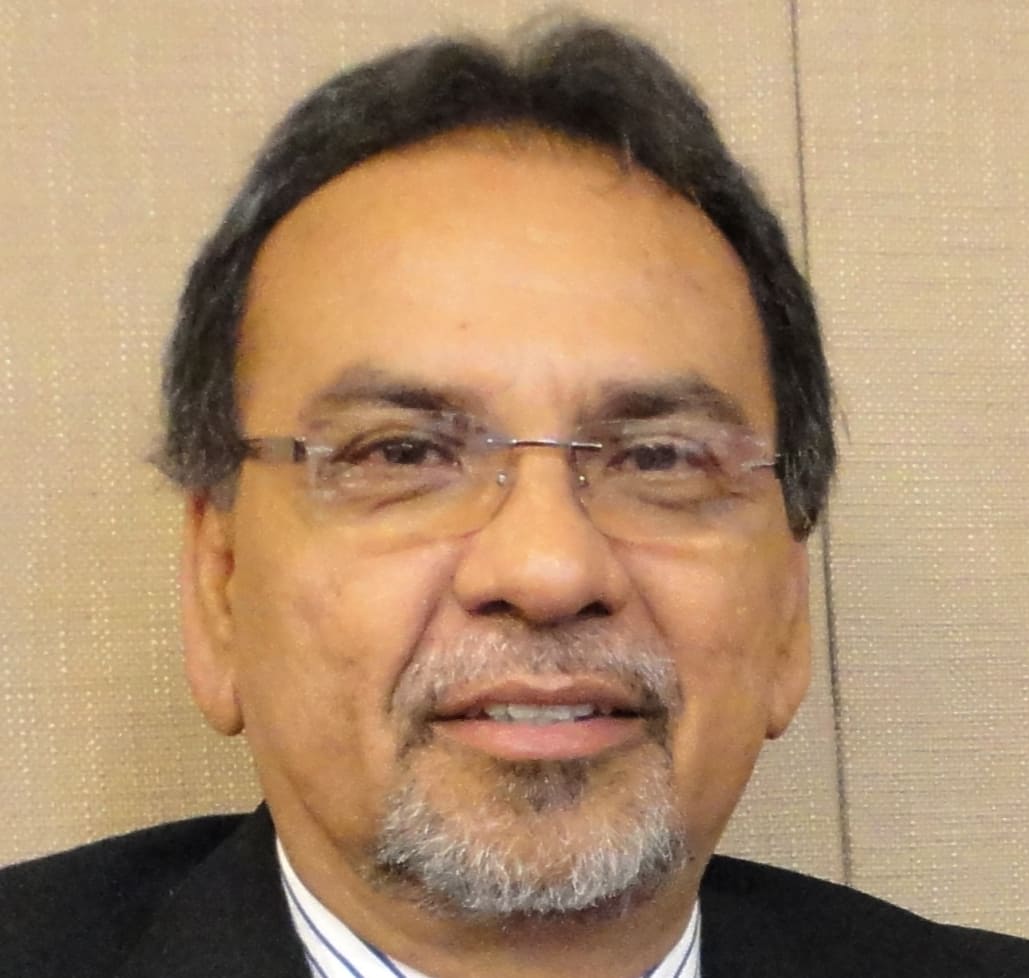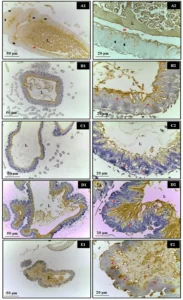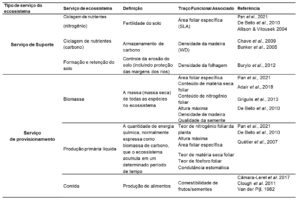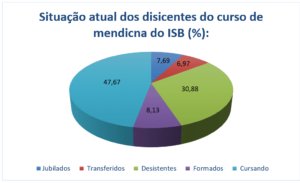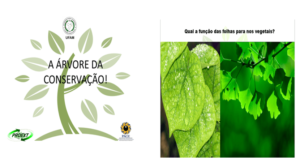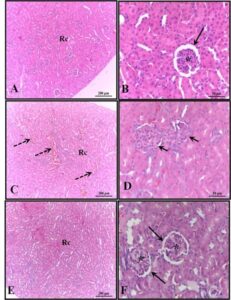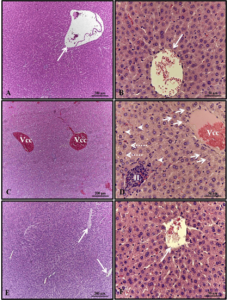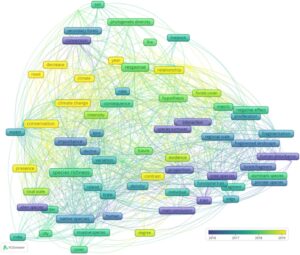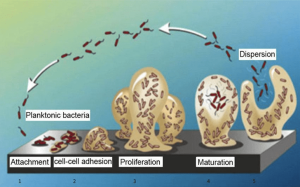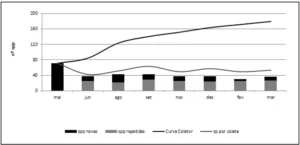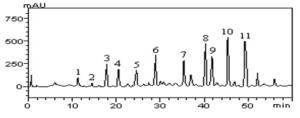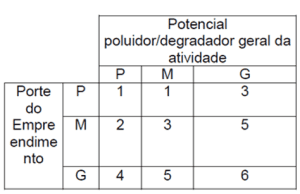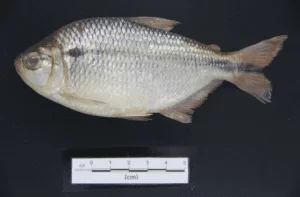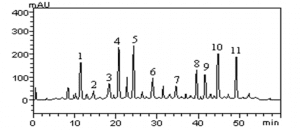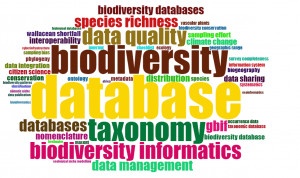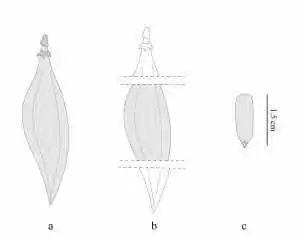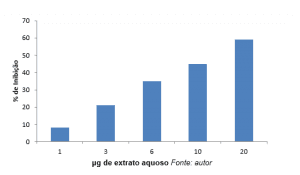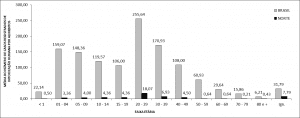THEORETICAL ESSAY
FONSECA, Claudio Ruy Vasconcelos da [1], SANTIAGO, Sandro Breval [2], PAULA, Estevão Vicente Cavalcante Monteiro de [3]
FONSECA, Claudio Ruy Vasconcelos da. SANTIAGO, Sandro Breval. PAULA, Estevão Vicente Cavalcante Monteiro de. Transdisciplinarity and scientific activism as wedges to accelerate Amazonian development. Revista Científica Multidisciplinar Núcleo do Conhecimento. Year. 07, Ed. 01, Vol. 04, pp. 254-278. January 2022. ISSN: 2448-0959, Access link: https://www.nucleodoconhecimento.com.br/biology/amazonian-development, DOI: 10.32749/nucleodoconhecimento.com.br/biology/amazonian-development
ABSTRACT
Studying and knowing the Amazon Rainforest in the current socioeconomic scenario leads to reflection on the effectiveness of the scientific methodologies adopted. Is the dialogue between research groups and decision makers allowing the production of knowledge robust and appropriate to the demands of the Amazonian productive sector, and articulated in order to sensitize the academy to focus on existing technological bottlenecks, as well as new opportunities for the use of natural wealth? An analysis was carried out on the requirements of scientific development notices produced by the main institutions of promotion and development in the Amazon Rainforest in the last two years, and it was found that the predominant epistemology is disciplinarity, a fact that makes the application of results more restricted. The temporal scale of scientific production, speed of impact on society in relation to its application, adequate language and lack of perception of society about the uncertainty of politics, are important factors that affect the relationship between academia and opinion makers and public policies, and it is necessary to intensify a certain scientific activism, application of translational epistemology. In parallel, the management of the governance of scientific knowledge would be, in some cases, more likely to succeed with the use of algorithms that are still timidly adopted in the academic environment of the Amazon Rainforest.
Keywords: Transdisciplinarity, Society, Amazonian science, Technological transfer.
1. INTRODUCTION
Science seeks to answer well-formulated questions to resolve society’s doubts. Well-formulated questions have well-defined focuses. Ironically, poll results often pose new questions. Nevertheless, there are still complex tangles of situations related to the behavior of the scientist, the relationship between science and society, its protocols and scientific methods that need to be analyzed to understand what is produced and how knowledge is produced, specifically in the State of Amazonas. This work aims to verify the reason why the knowledge produced in the Amazon academy has been of little use to support solutions required by complex problems. The guiding question is: would the dialogue between research groups and decision makers be allowing the production of robust knowledge that is adequate to the demands of the Amazonian productive sector, and articulated in order to sensitize the academy to address the existing technological bottlenecks, as well as like, new opportunities for taking advantage of natural wealth? The methodology used was an analysis of the last two years, of scientific funding notices, produced in the main Amazonian funding institutions, to verify if translational epistemology is already consolidating, considering the Amazonian complexity that requires more holistic responses to the paradigmatic regional demands and of the most applied sectors.
2. ARE SCIENTIFIC PROTOCOLS SUFFICIENT TO SOLVE PROBLEMS?
Scientists are generally seen as separate individuals from society, living in isolated laboratories, seeking knowledge not relevant to society’s day-to-day life. They are often satirized by talk show hosts who report research titles completely blurred of utility bias, such as “Variation of the rectal temperature of parrots from Lake X”, leading the audience to create a concept of academic eccentricity. However, there are different perspectives, at least with regard to the practical relevance of academic research (BASSETT, 2020). This is the case, for example, of synergies and repercussions between universities and developments in high-tech research, such as Silicon Valley in California, Route 128 around Boston and the Raleigh-Durham triangle, Embraer, Boticário Foundation[4], Embrapa[5] and Fiocruz. These synergies, however, relate to practical developments in areas such as information technology and research into biomaterials, biotechnology and pharmaceuticals. In the area of social and public policy development, links between academic research and policy development are rarely made.
While instant issues and problems may change over time, the need for research on fundamental issues is ongoing. Although individual policymakers often have short time horizons, the research process requires broader time scales, an unwelcoming circumstance, since academic production cannot respond immediately to politicians.
Key issues are of utmost importance for solving emerging problems. Currently, with the knowledge bases on viruses, researchers from various places in the world are developing clinical solutions to combat this new type of coronavirus (COVID-19) (BASSETT, 2020). However, in the Amazonian case, the edicts are not stimulating research in transdisciplinary groups, a fact that will be addressed below.
3. DOES ACADEMIC RESEARCH AFFECT POLITICAL DECISIONS? SHOULD ACADEMICS CONSENT IN CERTAIN ACTIVISM TO MAKE AN IMPACT ON DECISION MAKERS?
The words used by a certain minister of health emphasizing waiting for the scientific response to political decision-making by the state, becomes an appeal to reduce secularly known conflicts. According to Mitre (2016), Maquiavel warns that “councils based on normative ideals will weaken the prince” and “realistic councils [….] will strengthen them.”
The approximation between facts cited by Mitre (2016) as the raw material of the sciences, and values considered by the same author as the substance of the political conflict is the challenge of the current society that began to understand that, given the technological advances social and economic conflicts with great global adherence will only be solved with science. Thus, that science that does not participate in public policy discussion is bound to die for society in general.
This participation will take place with the gain of respectability as a result of the production of high quality scientific works that are effective in the political area. Research must be synthesized and translated into a language that is understood by policymakers, the general public and the media (GUNDERSON, 2007).
The scientific society must also be prepared to rescue the collection of information and knowledge produced over time to respond to emerging demands. It is quoted here as the fact that we currently live with the new COVID-19. Although new, there is already critical mass with information and knowledge that make it possible to unravel, in great strides, its secrets thus creating a positive expectation that there will soon be a remedy that will efficiently treat COVID-19 (OGBURN et.al., 2020).
This brings up the explanation of what Kuhn (2012) calls normal science, that is, research firmly grounded in one or more past achievements and that are recognized for some time by the scientific community as providing the foundations for later practices. It is precisely this basis that promotes advances and forms the activity of laboratories in less troubled times.
More importantly, there are examples of how accumulations of results can produce significant advances. A new discipline called Scientometrics analyzes how the various results published by different researchers and institutions can be grouped together to produce knowledge about constants and algorithms that were hidden, but that are important for academia, for economics, among others (SILVA et al., 2001).
However, it still remains to think of precise strategies that help increase the value of research, giving more visibility to the researcher and his work. (ZULUAGA, 2017). What is intended is to systematize results, organize the production of knowledge, issues that open possibilities for innovations that cause economic and political impact. However, the scientometric exercise has motivated the valorization of certain sciences that guarantee business profit, to the detriment of others that discreetly pave the set of knowledge necessary to understand and manage aspects of human experience that are complex and require so-called basic research.
The interaction between the scientific environment and opinion and political trainers builds a dialogue of extreme importance for the success of a developed and technologically advanced country, and this takes place within peculiarities and characteristics thus synthesized:
a) The time horizons in the research process are different from that of the policy. Polls that are motivated by political concern can reach the public domain only after political interest. Obviously, political acceptance is a key ingredient. There are simply times and conditions in which the political process will not be changed by the results of the survey, and other times when it will be open to changes that may be affected by this research (GUNDERSON, 2007). Aaron (1978) says that research, at times, reflects dominant political moods, but also influences politically. Heineman et al. (1997) raise the concern that research may lose its credibility if it is considered a “commodity to be bought and sold” and that, in this case, “analysis primarily to reinforce choices already made seems to be a common feature of reality. politics”. The authors stress the coercive force that academic research can suffer when funded to support specific policies. Such is the danger to which research institutions may be exposed at the present time, when a pandemic exacerbates political beliefs.
The correction to the above problem seems to be linked to the need for researchers themselves to often be involved in the policy-making process at some point in their careers. This theme was echoed by other researchers, such as Lynch (2005), an academic who served as chief economist at the U.S. Department of Labor from 1995 to 1997. However, there is a certain consensus that important scientists who occupy high stakes in the academic community do not waste time on policy-making. Perhaps, this is one of the reasons for a deficit in the impact of scientific results on decision-making.
b) Research whose result directly impacts society becomes much easier to become a public policy than that whose social benefit is indirect (CARNEIRO et al., 2018). Society’s perception of the contribution of science to public policy generated in the environmental area is much more difficult than that generated for health and engineering in general, even because in the environmental area there are different interests between social and economic segments.
c) There is difficulty of society in understanding that the response time for problem solving is associated with the variables involved in the analysis of the research, the time scale that needs to be considered and the multidisciplinarity necessary to produce information and generate robust knowledge that brings reliable solutions.
d) There is a lack of perception of society about the uncertainty of science and that research seeks to reduce the level of uncertainty as much as possible (LOMBARDI et al., 2010). Currently, the drama of chloroquine is experiencing, because the anguish of the population in receiving positive responses from the action of the drug against COVID-19 causes the public to press researchers for a rapid response. It turns out that there are so many variables involved in the process of developing a remedy, it takes a little time to get a result with an uncertainty level within a statistically acceptable confidence interval.
e) In the information society the public practically follows, in real time, the development of scientific works and is informed of the natural difficulties of a research process, as well as partial results (FACULDADE DE MEDICINA DA UNIVERSIDADE FEDERAL DE MINAS GERAIS, 2020). Such transparency creates uncertainty about what is being discovered.
f) The polarization of politics is trying to ideologicalize science by putting the absurd idea that scientific discovery is revealed in line with the dominance of the political environment in which the country is located (INSTITUTO PARA O DESENVOLVIMENTO DO JORNALISMO, 2015).
4. NEUTRALITY OF SCIENCE
Although it may be a recurring theme, it should be emphasized that the neutrality of science is legend. The scientist is a human being and, as such, a social being who is affected by his human, social and political relations. Political action in the midst of scientific activity is strongly resonating in financing and scientific dissemination.
Contemporary problems become the dominant research for educational, research and education institutions. Sometimes, scientific demands from more advanced countries, with different ways of life and with different operational facilities, become international scientific priorities.
Over time, there are concentrations of research groups from different areas on relevant themes of the time. This is due to the fact that funding agencies prioritize research relevant to the social, political and economic moment of a given time. Therefore, the changes in the research areas are not always due to the saturation of research on a given research object, but by the opportunity of resources offered by the funding agents. This causes voids within the knowledge chain of a search.
It is important to emphasize the effect of the information society on science, research and innovation. Maffesoli (1998) explains that postmodern society consists of constellations of tribes, whose members seek their survivals by forming en masse to fight what they believe in. Sometimes, they are Global villages in which their members generally do not know each other, but they militate for their own sake without deeply knowing the causes they defend, but which are mainly influenced by the media. This causes them to put pressure on local legislative, judicial and executive powers in an organized manner, putting at risk research into interests relevant to science and the country. It is worth remembering that the Academies of Science of the United States and England were almost prohibited from developing stem cell research by their congressmen (FALCÃO, 2005). From then on the scientific segment realized that it does not work for society, but with society, and decided to invest in the popularization of science.
At the same time, today’s technologically evolved society began to believe, more and more, in science. This growing consensus of society places Science as an important actor to support political decisions, causing social impacts capable of generating national and even worldwide controversies. This is somewhat reminiscent of Leff’s (2002) expression, in his work on environmental epistemology, that “The environment is not ecology […], but the relationship between powers over the dominant form of knowledge…”. It is important in global debates between nations to have in-depth knowledge about the object under discussion, so that agreements have better social and economic equity between countries.
This positive expectation of postmodern society in relation to science puts pressure on academia and research institutions for answers, as quickly as possible, to the social and economic problems of today. Issues related to the production of knowledge for health, environment and business are part of the daily cries of postmodern society. Ironically, researchers’ mistakes are not accepted, as if their hypotheses were always accurately correct, and when the results of a research are published, they suffer extreme pressure from those “tribes” whose perception of the object of studies is distinct.
5. ARE TRANSLATIONAL METHODS BETTER THAN DISCIPLINARY METHODS?
Scientists formed in the second half of the 20th century learned, for the most part, to build knowledge in an almost solitary way. It was the disciplinary method of subspecialization, where very focused problems were faced and could later be added to the existing body of knowledge. For this reason, there are a large number of edicts that allow individual research and, consequently, publications in solitary authorship. However, with the construction of globalization and multinational trade, environmental and social problems left “the villages” and became broad and complex, requiring isolated disciplines to approach, contributing to the emergence of interdisciplinary methodology. Thus, scientific research began a new modus operandi where a number of disciplines would have to operate together, while maintaining their methods and their own questions. This new way of creating knowledge began to permeate other professional activities. (CENTRE FOR EDUCATIONAL RESEARCH – CERI, 1972).
Balsiger (2004) establishes that the interdisciplinary method covers a series of disciplines and that it is not restricted to scientific research, but to teaching and professional practices. However, the interdisciplinary approach is not enough for a more reliable understanding of reality, because it is limited to a mixture of disciplines that remains almost without articulation, not providing the desired coherence for broader observations of complexity. This perspective gave rise to the transdisciplinary method, in which the final knowledge is more than the sum of its disciplines, but the fusion of disciplines (LAWRENCE, 2004). Transdisciplinarity implies a tension between disciplines, as multidisciplinarity or interdisciplinarity simply implies the combination of different types of knowledge. Transdisciplinarity should not simplify reality by only dealing with parts of it that are compatible in the intersection of multiple disciplinary perspectives, as is, in many cases, interdisciplinary research. Transdisciplinarity acts at the same time between disciplines surpassing them, thus composing all the processes of multidisciplinarity and interdisciplinarity (RAMADIER, 2004).
In transdisciplinarity, actions are designed to transform the built environment into multidimensional problem solving. Thus, the ability to solve complex problems is directly proportional to the effective co-participation between scientists, professionals, decision-makers, in an attempt to close an applicability gap in sectors that deal with the natural environment and the human environment. There is talk of a pressing need for innovative attacks in order to architect a society where social welfare is accessible to all (LAWRENCE et al., 2004).
Transdisciplinarity deals with difficulties in research and organizations that deal with complex and heterogeneous spheres. This mode of knowledge production is also characterized by its hybrid nature, nonlinearity with a great deal of reflexivity, transcending any academic disciplinary structure (BALSIGER, 2004). According to Lawrence et al. (2004) transdisciplinarity challenges the fragmentation of knowledge, accepts local contexts and uncertainties, implies intercommunicative action that requires close and continuous collaboration during all phases of a research project; is often action-oriented. This implies articulating the various disciplinary limits, but also articulating theoretical development with professional practices. Transdisciplinary contributions often deal with the real world and generate knowledge that not only addresses social problems, but also contributes to its solution.
At the present time of the orbi, where pandemics and catastrophes happen with increasing frequency, research and development institutions, especially national ones, will have to outline a more consolidated future in transdisciplinary. The organic resistance of the institutions that perpetuate their departments cannot be enough to help in the production of knowledge consistent with the complexity of the problems, whether natural or those arising from human activity.
6. AMAZON RAINFOREST: BASIC AND APPLIED RESEARCH, SCIENTIFIC TECHNICAL SERVICES, TECHNOLOGICAL DEVELOPMENT OR TRANSLATIONAL RESEARCH?
Nowadays, with the challenges of society, the search for answers through science to major national and international problems, it is necessary to question what is the best way to provide the various social and economic segments of information and knowledge to improve the quality of life of local populations.
In the Amazonian case, despite the efforts, disciplinary knowledge is still produced in greater quantity than the transdisciplinary, and the notices of promotion do not bring any requirement for translational projects.
There is a pressing need to create a transdisciplinary environment, under penalty of monstrous losses in the future. Research funding entities in the Amazon Rainforest have not yet seen the need, more than urgent, to start discussions and training for the emergence of transdisciplinary groups. There is a lack of contemporary vision of science and opportunities.
However, there was a first attempt to develop translational research in the Amazon, with the initiative of technicians from the Executive Secretariat of Science, Technology and Innovation of the State of Amazonas (SECTI[6]) in 2008. In that year, SECTI proposed the establishment of the Translation Platform for P, D & I with the aim of consolidating a system of conversion of knowledge into a product or process. Thus, it is expected to reverse the current situation in terms of technology to add value on the natural resources of amazonas. In the design of this proposal, in view of the studies conducted by SECTI on the competence, training and technicality existing in the State, two immediate actions were proposed: a) Induction of Public Policies for Training for Technological Development; b) Promotion of a set of robust technical and managerial processes, which bring agility and traceability to the path of basic science, technology and then to product development and the market.
Fish farming was one of the areas in which emphasis was given in the aforementioned study, with the aim of increasing its production and product quality to increase new markets. From the perspective of translational research, the entire path of science and technological development on fish feed produced in the State was traced. This study involved critical mass, technological capacity, existing segments and it was concluded that the State has no critical mass for technological development in relation to the economic use of what has been generated scientifically. The translational evaluation made it possible to observe the voids in the knowledge chain, a fact that makes it impossible for information to be available to the market.
The application of translational research presented as a proposal to accelerate the socioeconomic development of the State of Amazonas, within the scope of the Matrix project produced by the technical team of the State Secretariat for Economic Development, Science, Technology and Innovation (SEPLANCTI[7]), is based on a broad study on the profile of knowledge production in academia and local research institutions. This study revealed a melancholic sad reality related to the production of research in the State; concentration on basic and/or exploratory research with very little action in applied research and technological development. In order to overcome the current inertia of scientific production, converting knowledge as quickly as possible into invoices, it is suggested to use the translational method. For a simple understanding of the research, the technicians presented the translation platform for P, D & I for the development of bioeconomics in the State of Amazonas (Fig. 1).
Figure 1 – Translation Platform for Research, Development and Innovation
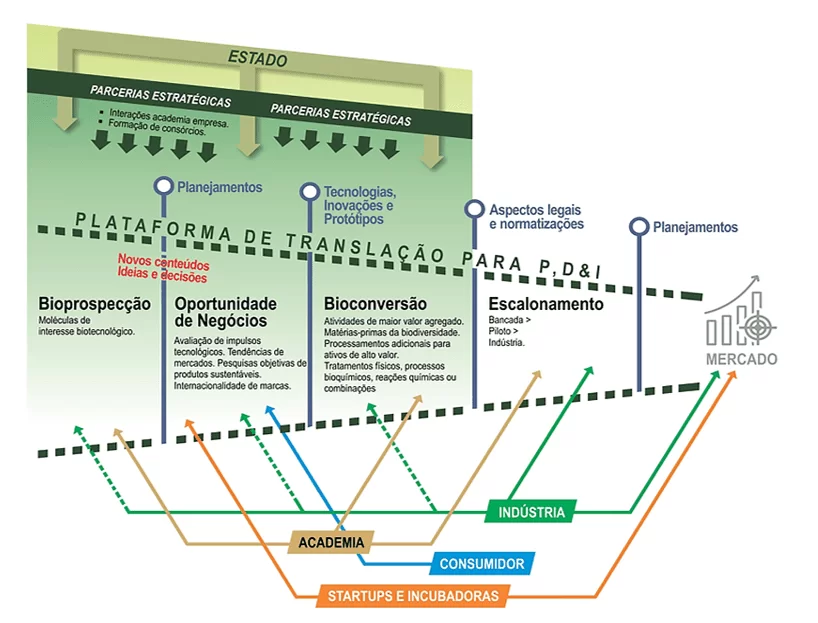
7. GROUNDED MODELS
It is interesting to realize that in the history of the development of science, scientific analyses and processes have evolved according to technological innovation. Before it was an empirical process, came the Cartesian idea, and with the advent of equipment that facilitates the handling of information, the modeling appeared and now eScience, which is based on the use of significant volumes of data obtained in real time, making it possible to obtain knowledge about an object of study in the most real way possible.
But, unlike what can be imagined, science is not done without the application of an adequate methodology that adopts a logical rationality seeking to answer well-defined questions. On the other hand, nature is not departmentalized, but is the result of a series of physical, chemical, biological phenomena that occur concomitantly within a complexity difficult to be theorized. Thus, one must seek a connection, as close as possible, between theory and reality; therefore, a more holistic view of nature and knowledge is needed. In this context, modeling, in view of the currently existing instruments for experimentation and data analysis, is the most appropriate mechanism to find the most accurate answer possible about the world in which we live.
Through scientific activity it is possible to conceptually construct the world through simplified and idealized representations of systems accepted by scientific communities.
Science as an investigative activity is essentially social, applying to the improvement of the environment that surrounds us, whether natural or artificial, through the invention and manufacture of material or cultural goods, becoming technology, and can be considered an activity producing new ideas. The fundamental characteristics of scientific work are rationality and objectivity.
Rationality corresponds to concepts, interpretations and reasoning, which can be combined by obeying a set of logical rules that allow new ideas to be reached, while objectivity seeks to reach the truth; it verifies the adaptation of ideas to facts using a work composed of observation, which is controllable, and experimentation that, to some extent, is reproducible. Therefore, scientific knowledge rationalizes experience not merely describing it, that is, it is not enough to inventory facts, but to explain them through hypotheses and systems of laws called theories.
Brandão et al. (2011) explain that scientists do not chase infallible recipes to build models based on reality and that reflect the facts, within a context of validity, with a desirable degree of precision. Justi et al. (2002) show that learning Science means knowing the models idealized by scientists, as well as the theories and laws that underlie the principles and concepts used in their logical structures. Therefore, it is necessary to reflect on scientific models seeking to understand their functions and limitations, a process that makes it possible to test and express new models, something that is the basis of the formation of knowledge in the sciences of nature. In other words, science aims to apprehend reality through reasoning (BUNGE, 1960).
Brandão et al. (2011, p. 513) say that:
Em suma, o processo de modelagem científica reside no fato de que teorias gerais, que em princípio não se pronunciam diretamente sobre a realidade, ao acolherem modelos conceituais, produzem representações de parte da realidade, ou seja, modelos teóricos que fornecem soluções a situações-problema particulares.
The activity of building theoretical models depends on the available knowledge and the skills of the scientist. In Bunge’s (1989) theoretical models are schemes that should be grafted on a theory, which should be confronted with the facts.
A survey of national scientific literature will allow us to see that there are few working on scenario modeling. Such absence compromises our creative ability when confronted by unexpected circumstances. This problem is linked to the absence of transdisciplinary groups that can look for models, anticipating probable upheavals. Undoubtedly, there is a considerable body of knowledge generated by decades of investment, but it will be important that they are systematized giving rise to predictive modeling.
The change of the national reality, and especially the Amazon, relative to the point of view of modeling, requires returning to the banks of the university and strengthening courses including mathematics, physics and statistics. Didactics should be updated, contextualizing the performance of this knowledge to current realities, where the knowledge represented by consistent modeling needs to be developed with a body of researchers from different areas of knowledge.
It still resents, in some cases, the development of research projects, a scientifically appropriate design of an experiment, incorporating the variables involved and contributions from other areas of knowledge. Unfortunately, even today, there are researchers who insist on developing their scientific work in isolation, which will evidently result in a shelf product. Currently, the scientific world and public and private segments value the science produced by groups of transdisciplinary and translational scientists.
In this context, it is also worth noting the exponential increase in the production of scientific data in the different areas of knowledge, transforming academic communication. From the farthest places in the world it is possible to access data, exchange information and knowledge in real time, so that the knowledge produced is streamlined and the response of your research effort has more consistency.
Governments and research funding agencies already have increased access to data and publications as a means of increasing the pace of research. What scares, in the Amazonian case, and that serves as a warning to young scientists, is that the world of science is changing. It is data intensive science, where thousands of data are obtained by instruments or generated through software-produced simulation and made available in a database. The technique and technology for this data-intensive science requires the state to encourage developers, designers and researchers to build multimodal, user-centric applications so that they can be assisted in their research activities. Without a doubt, after the health crisis in which we live today, where virtual communication has spontaneously grown significantly, and should be consolidated worldwide, the new researcher should have access to these new instruments, learning even to collect data to introduce them into the database. Such data are being considered by public funding agents as information that can be made available in databases for society, because they were obtained with public resources, but the knowledge, this yes, is the researcher.
8. ALGORITHMS
Human beings in the coming years can be controlled by a set of algorithms according to the famous historian and writer Harari (2018). It is common in business, administration and other activities that we are faced with what we call a system. Sometimes we find ourselves in front of a cashier of a store with the system that is not working and everything is stopped. Both the buyer and the seller are angry, but they can’t do anything until the system works again. The situation worsens when this system, now transforming into Artificial Intelligence (AI), may, through biosensors, have the ability to manifest itself according to the emotions of the human being or lead him to a situation desired by the AI operator. The system in fact is an interactive set of algorithms, sensors, computers and operators.
The algorithm is the “modeling” of perfectly defined procedures that lead to the solution of a problem or situation in a number of finite steps. These algorithms are not necessarily represented by mathematical models, but by well-defined procedures to achieve a goal (MEDEIROS et al., 2019). For example, the path from home to college can be established as routes to be traveled that can be simply written; however, if there are alternatives considering traffic, cost, etc., the solution is easier by modeling mathematically and pondering all variables to finally make the decision to achieve the goal more quickly and with lower cost. For this, algorithms are used with the use of mathematical resources not commonly used in classes, that is, graph theory that studies the relationship between objects of a given set. The objects considered in this theory are called vertices, and the relationship that connects them and their path weights. For example: The development of solutions in a scientific algorithm, seeking in an iterative and interoperable way to improve the set of hypotheses and possible solutions, considering the cyclical and continuous aspects. For Goodman (2016), the iteration of the algorithm consists of selecting sets of variables of the problem and optimizing them in the solutions of the population, in fact it is a certain procedural parallelism.
Modeling influences the optimization process, where such a process is a stochastic search with bias, by its initially cyclic approach (loop) or in its focus on the problem even with restrictions of dimensions of results (effectiveness).
Let’s take a look at the Traveling Salesman Problem (TSP), the resolvability involves aspects of the quantitative form of solutions, either by understanding the graph weights or by the cost of the connections (paths) of the vertices.
In Ottoni et al. (2018) a solution for TSP can be demonstrated by the sequence of vertices visited in the graph, it is worth mentioning that any constructive method can be used to generate the initial solutions, including random generation, but in general, there are responses based on two paradigms, symmetrical and asymmetric. The first is related to the cost of travel, and the second direction of realization of the route can change the value of the total distance traveled.
How is the TSP interested in discussing the best way to be followed by science? It is that the possible solutions are in the form of social networks and techniques (scientific grads). The notion of a network of actors contemplates a plan of heterogeneous connections from which both sciences and beliefs emerge, etc. A network is built by multiple connections, multiple inputs, and multiple results, and thereby nullifying restrictive paths and becoming more efficient.
What is at stake is not the problem’s resolution, but the observer’s point of view and all the consequences inherent in his decision. The other side is the form of indexing that allows us to organize reflections and asymmetries, either of the problem or of the paths to be taken, and this fact is very important to avoid continuous non-effective processes.
In the scientific sphere, induction does not always have a step in the process of observation, indexing and above all resolution. And the evidence of this assertion is in the facts of the ineptitude of content analysis of data models, in nomological insignificance and in the strict lack of reliability (cronbach’s alpha or dillon), and, therefore, they inequality the role of objectivity, to the detriment of the process and not of the resolution itself. It is worth recording the latent need for discriminating and convergent validations.
Furthermore, the occurrence of algorithmic recursion that is inserted in the low effectiveness of the projects, and that such anomaly circumscribes two aspects: the first, related to the lack of institutionalization and its consequences; the second, due to excessive bureaucratic dysfunction. We can perceive that the logic of the TSP, or its morphology, reaches the structures of science, that depending on the context it will not find adequate, and foolproof, models of knowledge generation, permeating models with Cohen indicators (f2) extremely low.
A harmful consequence is the low interoperability of science, not only with social actors, but mainly with the institutional research network, resulting in the low semantics of the data generated, bringing to the fore research projects disaffected to the local and low impact problem, and as well as the TSP, they are lost in the discussion of symmetry, which would in a certain way be simple since a graph has 4 vertices and 6 edges invariably.
The analysis of interoperability can be done through an analogy of graphs for scientific problems. As an example, there are several trails that can be made to create a network between actors that can respond more efficiently to the demand for research. The actors involved start from the concept of triple helix to an ecosystem of innovation, adding more actors who need to participate in the process, being researched in the Amazon Rainforest (Fig.2).
Figure 2 – Resource utilization plan for research, development and innovation
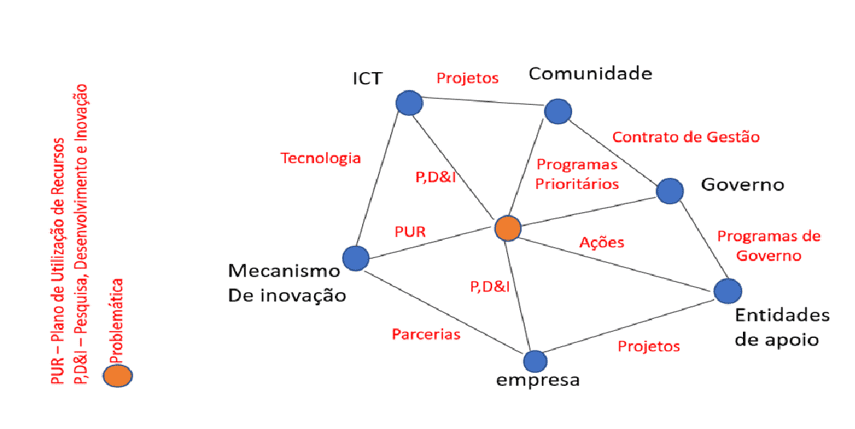
The graph presented allows to make an adjacency matrix and ponder each of the actors depending on the objective of the research to be developed. For example: In the development of research of a more social nature it is possible that it is not contemplated company. It is permissible, therefore, to know the actors most pertinent to the project and the most appropriate referral so that the research has a more effective result.
In science with the technological innovation of sensors and biosensors, which provide a large volume of data of various variables in real time, whose analysis and weightings of these data, made systematically, can be manipulated by scientific algorithms that, placed in machine language, facilitate the processing of data and make available to users the information necessary for decision making.
Currently, without realizing it, this is the path adopted by meteorology, climate studies, water bodies and some areas of health. This has some extremely positive aspects:
a) The data and information start to have “dialogue” with the researcher or the user of the system;
b) It is possible in the studies to incorporate many more variables, that is, to expand the universe of research, enabling more robust results to be obtained;
c) Research done by humans will be much less invasive to the environment, including fauna, than it is today;
d) In the area of health it is possible that each human being has its own algorithm for monitoring their health in real time in anticipation of possible serious diseases.
e) Finally, it is likely that the human being in the coming years can easily overcome the 80 years of age, being followed in real time, and being guided about what to eat and what behavior should have to achieve longevity.
9. THE ROLE OF INSTITUTIONAL TECHNOLOGICAL INNOVATION CENTERS (TIC)
One of the most limiting academic difficulties concerns the visibility of what is being accomplished in research institutions. In developed countries, institutions have very active disseminated bodies, which give visibility to publications, a fact that raises the meeting of innovative possibilities for companies, generating economic dynamics. In this scenario, the cooperation between the university, company and government corroborates the way that technologies leave the libraries of institutions and reach society (AGUSTINHO et al., 2018).
Promoting synergies benefits society as a whole; governments seek development with economic increases in order to create social benefits, universities run in the production of knowledge that add to the existing body of science, but, which often remain in the academy itself without any contextualization, and companies need to survive in the competitive market aiming at profitability. Thus, the meeting of these aspects can be facilitated through the Centers of Technological Transfer (CTT).
Agustinho et al. (2018) claim that economists divide the innovation process into three phases: invention (the idea potentially open for commercial exploitation), innovation (commercial exploitation) and diffusion (propagation of new products and processes by the market). Obviously, the work done by TIC is central, because technological dissemination is the way innovations spread towards the market. The diffusion of innovation provided by TIC can effectively have an impact on the economic system.
Silva, et al. (2015) analyze the process of technology transfer between University-Industry in TICs of public universities of the State of Paraná, where they highlight a series of warnings to improve the performance of this instance.
One of the items concerns the increase in business capacity to track changes caused by new technologies, in order to improve products or incorporate innovations. Undoubtedly, TICs should improve their relations with companies, seeking to see which technological bottlenecks can be addressed in research institutions; TICs lack the sensitivity to realize innovative needs, stimulating the creativity of the academy that will result in innovation benefiting the socioeconomic well-being.
It is also part of the routine of TICs to promote institutional interactions in the academic field, with a view to the formation of special research groups and development of innovations, whose dynamics are translational. Thus, intellectual stimuli should be considered with the inclusion of young researchers. The development of a cooperation environment requires special attention, as it necessarily deals with the interests of academia and companies. However, it is up to the TICs to stimulate the training to the translational environment.
Agustinho et al. (2018) consider that researchers in universities should view cooperation with industry as an essential organizational skill. Certainly, TICs will be able to develop effective mechanisms to consolidate such cooperation.
On the other hand, TICs should seek greater interaction with the government, to facilitate fundraising, especially aimed at financing research stemming from crisis demands. One of the Brazilian difficulties is the bureaucratic burden related to intellectual protection and technological transfer, both in the national and international environments. More bureaucratic agility must be sought, a political action that can be triggered by TICs.
The advances in innovation and patents within the Brazilian government occurred when, at the beginning of the year 2000, the Brazilian government structured its educational and research institutions with the implementation of the Center for Technological Innovation and the regulation of the patent law. Despite these extremely important initiatives, some items were missing to achieve success, especially research in the area of natural resources. Access to natural heritage through the Genetic Heritage Management Council (CGen); the time of obtaining patents, which reaches up to 10 years and finally the cultural issue of researchers over 50 years.
10. FINAL CONSIDERATIONS
Despite the Amazonian effort in the production of robust scientific knowledge, complex demands still cannot count on categorical responses, due to the very timid support of the translational methodology by the local academy. On the other hand, the influence of scientific results on decision makers could be more permanent if a certain scientific activism were adopted, in order to make more visible solutions, which are often of prompt use, but end up locked in the libraries of universities.
One of the indicators that the results persist in disciplinarity is a scarcity of edicts that encourage the formation of translational research groups that, in turn, allow mathematical modeling, which are the fastest ways to offer alternatives for governance management, especially in the Amazon Rainforest. This tool always offers scenarios with high probabilistic reliability, being important support to political decisions. However, this dimension is still in its infancy, and the Amazonian undergraduate and graduate programs have not seen how urgent its adoption is. In addition, the dialogue between the various regional research groups is still tangential. There are no structuring programs for the approximation of institutions and production of translational results, a task that could be headed by regional Research Support Foundations[8].
The open spaces between the academy and the social sectors should be intensified so that the dialogue took place uninterruptedly. The Centers of Technological Transfer (CTT) that are the appropriate windows for this dialogue act, in the Amazonian case, at reduced speed, but could be locus of inducing innovations and attracting resources to research, in order to encourage the emergence of technological parks and, consequently, socioeconomic progress.
REFERENCES
AARON, H. J. Politics and the Professors: The Great Society in Perspective. Washington, Brookings Institution, 1978.
AGUSTINHO, E. O.; GARCIA, E. N. Inovação, Transferência De Tecnologia e Cooperação. Direito e Desenvolvimento, v. 9, n. 1, p. 223-239, 2018.
BALSIGER, P.W. Supradisciplinary research: history, objectives and rationale. Futures, v.36, n.4, 407-421, 2004.
BASSETT, M. T. Tired of science being ignored? Get political. Nature, v. 337, 2020.
BRANDÃO, R. V.; ARAUJO, I. S.; VEIT, E. A. A Modelagem Científica Vista como um Campo Conceitual. Caderno Brasileiro de Ensino de Física, v.28, n.3, 507-545, 2011.
BUNGE, M. La ciencia, su método y su filosofia. Buenos Aires: Ediciones Siglo Veinte, 1960.
BUNGE,M. La investigación científica: su estrategia y su filosofia. Barcelona: Editorial Ariel, 1989.
CARNEIRO, M. J. T.; SANDRONI, L. T. Ciência e política pública na perspectiva dos gestores: clivagens e confluências. Revista Sociedade e Estado, 41-61, 2018.
CENTRE FOR EDUCATIONAL RESEARCH AND INNOVATION (CERI). Interdisciplinarity: Problems of Teaching and Research in Universities. Paris: Organization for Economic Co-operation and Development, 1972.
FACULDADE DE MEDICINA DA UNIVERSIDADE FEDERAL DE MINAS GERAIS. Belo Horizonte: Faculdade de Medicina, 2021. Disponível em: https://www.medicina.ufmg.br/nova-perspectiva-da-pesquisa-em-tempo-real/ acesso em 23 outubro 2021.
FACULDADE DE MEDICINA DA UNIVERSIDADE FEDERAL DE MINAS GERAIS. Nova perspectiva da pesquisa em tempo real. Belo Horizonte: Faculdade de Medicina da UFMG, 2020. Disponível em: https://www.medicina.ufmg.br/nova-perspectiva-da-pesquisa-em-tempo-real/ Acesso em 21 de outubro 2021.
FALCÃO, I. Entenda a evolução das pesquisas com células-tronco no mundo. Agência Brasil, 2005. Disponível em: http://memoria.ebc.com.br/agenciabrasil/noticia/2005-02-02/entenda-evolucao-das-pesquisas-com-celulas-tronco-no-mundo Acesso em 15 de outubro 2021.
GOODMAN, Bryce W. “A step towards accountable algorithms? Algorithmic discrimination and the European Union general data protection.” 29th Conference on Neural Information Processing Systems (NIPS 2016), Barcelona. NIPS Foundation. 2016.
GUNDERSON, M. How Academic Research Shapes Labor and Social Policy. Journal of Labour Research, 1-33, 2007.
HARARI, Y. N. Homo deus: uma breve história do amanhã. Rio de Janeiro: Editora Companhia das Letras, 2018.
HEINEMAN, R. A.; BLUHM, W. T.; PETERSON, S. A.; KEARNY, E. N. The World of the Policy Analyst: Rationality, Values and Politics. Chatham, NJ: Chatham House Publishers, 1997.
HEY, T.; TANSLEY, S.; TOLLE, K. (orgs.). O Quarto Paradigma: descobertas científicas na era da eScience. São Paulo: Oficina de Textos, 2011.
INSTITUTO PARA O DESENVOLVIMENTO DO JORNALISMO. A ideologização da ciência. Observatório da Imprensa, 2015. Disponível em: http://www.observatoriodaimprensa.com.br/ciencia/a-ideologizacao-da-ciencia/ Acesso em 15 de outubro 2021.
JUSTI, R. S.; GILBERT, J. K. Modelling, teachers’ views on the nature of modelling, and implications for the education of modellers. , v. 24, n. 4, p. 369-387, 2002.
KUHN, T. S. The Structure of Scientific Revolutions. Chicago: University of Chicago Press, 2012.
LAWRENCE, R.J. Housing and health: from interdisciplinary principles to transdisciplinary. Futures, v. 36, n. 4, p. 487-502, 2004.
LAWRENCE, R. J.; DESPRÉS, C. Futures of Transdisciplinarity. Futures, v. 36, n. 4, p. 397–405, 2004.
LEFF, E. Saber ambiental: sustentabilidade racionalidade, complexidade, poder. Rio de Janeiro: Vozes, 2002.
LOMBARDI, M. F. S.; BRITO, E. P. Z. Incerteza Subjetiva no Processo de Decisão Estratégica: uma Proposta de Mensuração. Revista de Administração Contemporânea, p. 990-1009, 2010.
LYNCH, Lisa. Job Loss: Bridging the Research and Policy Discussion. IZA Discussion Paper, p. 1518, 2005.
MAFFESOLI, Michel. O Tempo das Tribos. O Declinio do Individualismo nas Sociedades de Massa. Rio de Janeiro: Forense Universitária, 1998.
MEDEIROS, Dianne SV et al. Análise de dados em redes sem fio de grande porte: Processamento em fluxo em tempo real, tendências e desafios. Sociedade Brasileira de Computação, 2019.
MITRE, M. As relações entre ciência e política, especialização e democracia: a trajetória de um debate em aberto. Estudos Avançados, v.30, n.87, p. 279-298, 2016.
OGBURN, E. L.; BIERER, B. E.; BROOKMEYER, R.; CHOIRAT, C.; DEAN, N. E.; GRUTTOLA, V.; ELLENBERG, S. S.; HALLORAN, M. E.; HANLEY Jr, D. F.; LEE, J. K.; WANG, R.; SCHARFSTEIN, D.O. Aggregating data from COVID-19 trials. Science, v.368, n.6496, p.1198-1199, 2020.
OTTONI, A.L.C.; NEPOMUCENO, E.G.; OLIVEIRA, M.S. A response surface model approach to parameter estimation of reinforcement learning for the travelling salesman problem. Journal of Control, Automation and Electrical Systems, v.29, n.3, p. 350-359, 2018.
RAMADIER, J. Transdisciplinarity and its challenges: the case of urban studies. Futures, v. 36, n. 4, p. 423-439, 2004.
SILVA, J. A.; BIANCHI, M. L. P. Cientometria : A Métrica da Ciência. Paidéia, p. 5-10, 2001.
SILVA, L. C. S.; KOVALESKI, J. L.; GAIA, S.; SEGUNDO, G. S. A.; CATEN, C. S. T. Processo de transferência de tecnologia em universidades públicas brasileiras por intermédio dos núcleos de inovação tecnológica. Interciencia, v.40, p. 664-669, 2015.
ZULUAGA, C. G. La investigación como ejercicio para saber y para vivir. Perseitas, v.5, p. 272-275, 2017.
APPENDIX – FOOTNOTE
[4] Fundação Boticário.
[5] Empresa Brasileira de Pesquisa Agropecuária.
[6] Secretaria Executiva de Ciência, Tecnologia e Inovação do Estado do Amazonas.
[7] Secretaria de Estado de Desenvolvimento Econômico, Ciência, Tecnologia e Inovação.
[8] Fundações de Amparo à Pesquisa.
[1] Doctor. ORCID: 0000-0002-1955-288X.
[2] Doctorate. ORCID: 0000-0002-0184-9845.
[3] Doctorate. ORCID: 0000-0002-9913-2403.
Submitted: July, 2021.
Approved: January, 2022.
